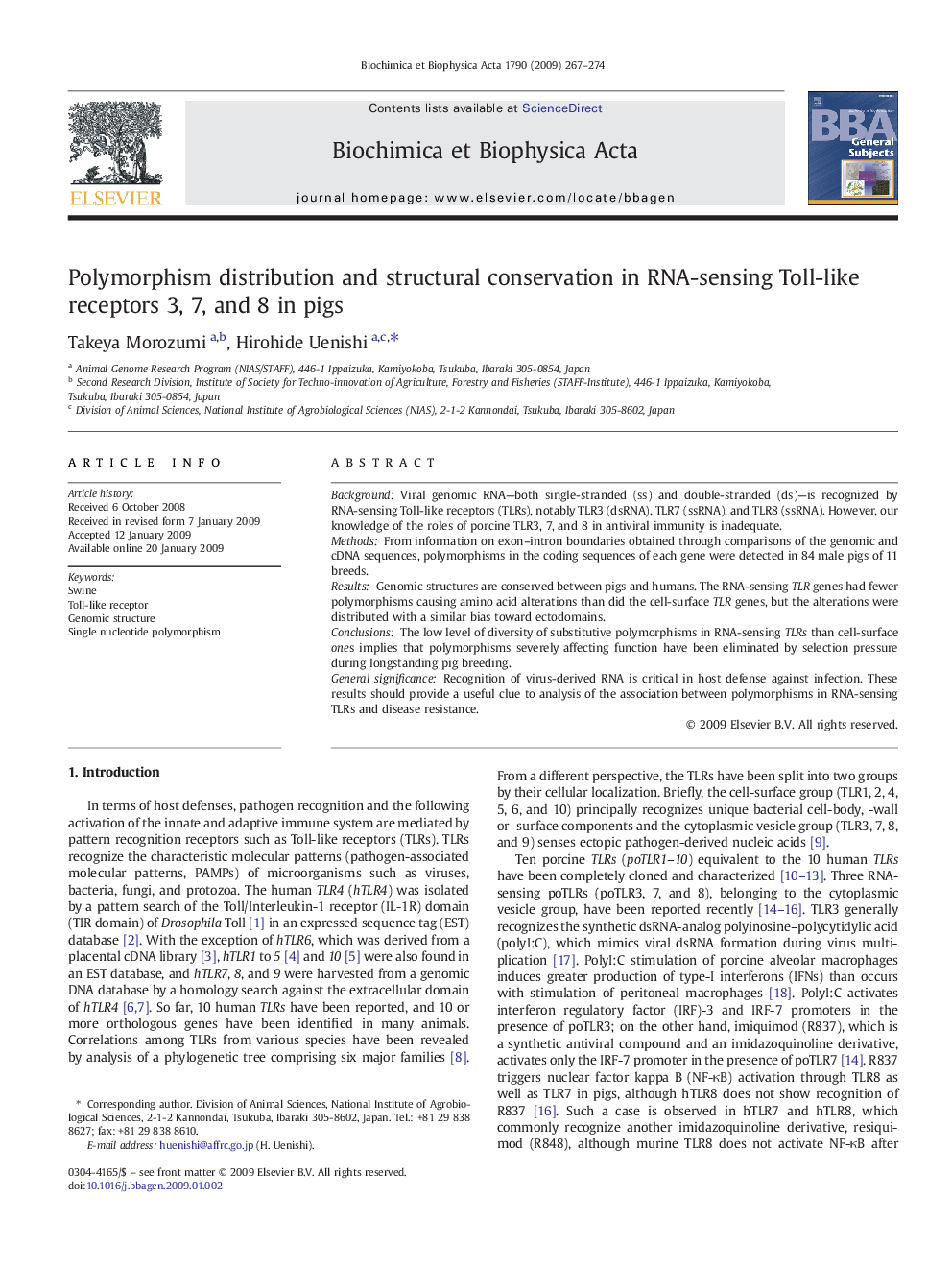| Article ID | Journal | Published Year | Pages | File Type |
|---|---|---|---|---|
| 1947997 | Biochimica et Biophysica Acta (BBA) - General Subjects | 2009 | 8 Pages |
BackgroundViral genomic RNA—both single-stranded (ss) and double-stranded (ds)—is recognized by RNA-sensing Toll-like receptors (TLRs), notably TLR3 (dsRNA), TLR7 (ssRNA), and TLR8 (ssRNA). However, our knowledge of the roles of porcine TLR3, 7, and 8 in antiviral immunity is inadequate.MethodsFrom information on exon–intron boundaries obtained through comparisons of the genomic and cDNA sequences, polymorphisms in the coding sequences of each gene were detected in 84 male pigs of 11 breeds.ResultsGenomic structures are conserved between pigs and humans. The RNA-sensing TLR genes had fewer polymorphisms causing amino acid alterations than did the cell-surface TLR genes, but the alterations were distributed with a similar bias toward ectodomains.ConclusionsThe low level of diversity of substitutive polymorphisms in RNA-sensing TLRs than cell-surface ones implies that polymorphisms severely affecting function have been eliminated by selection pressure during longstanding pig breeding.General significanceRecognition of virus-derived RNA is critical in host defense against infection. These results should provide a useful clue to analysis of the association between polymorphisms in RNA-sensing TLRs and disease resistance.
